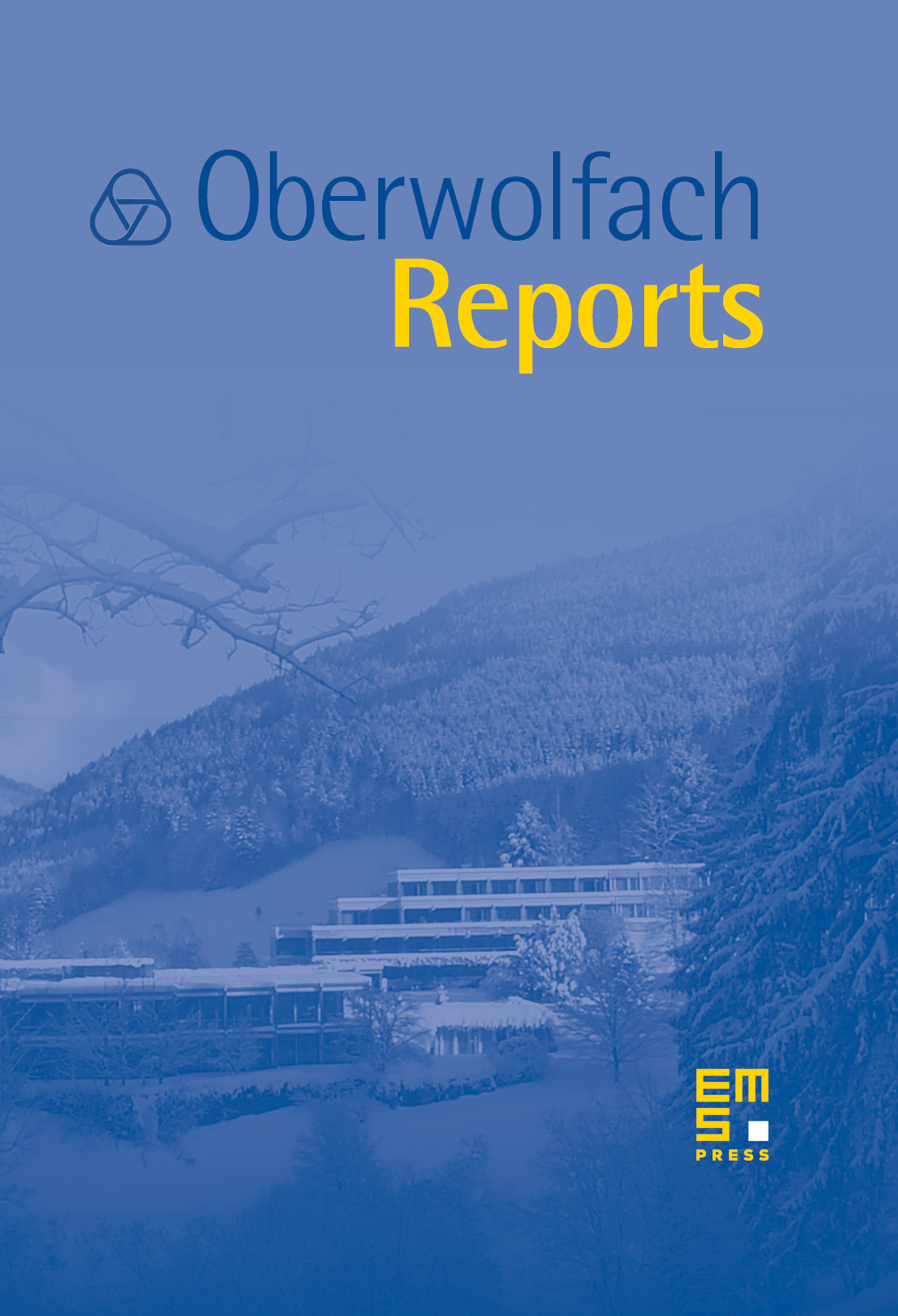Mini-Workshop: Analytical and Numerical Methods in Image and Surface Processing
Gerhard Dziuk
Universität Freiburg, GermanyUlrich Reif
Technische Hochschule Darmstadt, GermanyMartin Rumpf
Universität Bonn, GermanyPeter Schröder
California Institute of Technology, Pasadena, USA

Abstract
In different areas of mathematics and computer science significant progress has been achieved with respect to geometric modeling, the processing of detailed surface models and geometric methods in morphological image processing. In contrast to classical tools in approximation theory such as spline curves and surfaces these new approaches rely on methods from the calculus of variations and geometric evolution problems. As examples we would like to mention here:
- Variational methods in image and surface processing such as active contour models, Mumford–Shah type functionals,
- image and surface denoising based on geometric evolution problems,
- physical modeling of surfaces based on shell models,
- the restoration of images and surfaces using higher order variational formulations with curvature dependent energy integrants.
Recently it has become clear that even though the applications areas differ significantly the methodological overlap is enormous. E.g. currently Willmore flow is one of the hot topics in geometric analysis and at the same time it turned out to be an adequate approach for the restoration of destroyed surfaces. Simultaneously the Willmore energy is a fundamental building block in variational methods of morphological image processing. Indeed as for surfaces it can be used for restoration and the disocclusion of images. Furthermore, it enters important fairness criteria in geometry processing and the generation of smooth surface models.
The progress in this new, active and already very successful research field has its roots in originally completely different disciplines of mathematics and computer science. Hence, an exchange of different methodologies and a joining of activities is very promising. This was the intention of the mini workshop. To achieve this goal researchers from completely different areas of mathematics and mathematically oriented computer science were invited to share their point of view and their recent achievements with others. The intention of this mini-workshop was to initiate stronger exchange, to encourage the exploration of synergies and the building of bridges between the different disciplines and the different types of approaches for closely related research fields. In particular we intended to bring together people from
- geometric analysis related to second and fourth order problems,
- numerical geometric analysis for geometric variational problems and geometric gradient flows,
- geometric approximation theory in particular subdivision and spline surfaces,
- engineering applications of geometric variational problems,
- variational problems in computer graphics,
- image processing and in particular morphological methods in this field.
Let us unroll one of these synergy fields:
- Tools in surface modeling are at the same time tools in morphological image processing. Indeed image morphology can be regarded as the set of all level sets and thus morphological processing of images coincides with the geometric processing of the level sets. Vice versa, image processing methods are of increasing importance and success in surface processing applications. Image edges and image textures find their counterparts in edge structures on surfaces and the color and structure textures on complicated geometries.
- Neither explicit nor implicit methods have been able to establish as the approved standard in geometric processing. On the one hand explicit methods directly operate on triangular grids as a wide spread standard for the representation of discrete surfaces and enable extremely detailed models, not beatable by implicit – even sparse – surface models. On the other hand implicit surface representations by level sets are more flexible. They allow weaker notions of solutions which in particular enable topological chances.
- Practical algorithms can be derived via a discretization of variational formulations of continuous models making use of the general finite element procedure. Or one directly asks for discrete counterparts of geometric quantities. The latter approach is usually based on invariance principles and qualitative properties to be reproduced from the continuous setting. The notion of discrete curvatures is a good example for this. These different discretization approaches were compared and we were aiming to stimulate progress making use of synergy.
- The numerical analysis of the geometric evolution problems discusses adequate discretizations and concerns about convergence and stability issues. Recent results in this direction were presented and underline the practical usability of these methods. Here close relations between models for parametric surfaces, graph surfaces and implicit surface representation have been exploited.
- Various approaches to treat free discontinuity problems in image and surface processing have been proposed. Level set methods and phase field models were discussed and compared during the workshop.
- The construction of higher order methods for the approximation of surfaces and for the solution of partial differential equations on surfaces have been proposed. In particular subdivision techniques and so called WEB splines were presented. Subdivision surfaces proved in particular very useful in computer graphics and turned out to be applicable for the discretization of fourth order shell models. On the other hand tensor product B-splines – which are one of the established standards in industrial surface modeling – can be modified using appropriate weighting functions to be applicable on general domains and surfaces with complicated boundaries. Again the usability of such approximation schemes for different applications such as shell models for surfaces and the discretization of deformations in image matching were discussed.
The organizers contributed introductory talks into the different fields to stimulate discussion and interaction.
In parallel to this mini workshop another mini workshop on fluid interfaces took place. Together with the organizers of the latter workshop we arranged for several joined talks on the common interest field of geometric evolution problems by participants of both workshops. This interplay turned out to be very fruitful and inspiring.
One Thursday evening we had a longer evening talk on a new approach for the discretization of fluid motion given by Peter Schröder.
Cite this article
Gerhard Dziuk, Ulrich Reif, Martin Rumpf, Peter Schröder, Mini-Workshop: Analytical and Numerical Methods in Image and Surface Processing. Oberwolfach Rep. 2 (2005), no. 1, pp. 529–564
DOI 10.4171/OWR/2005/10